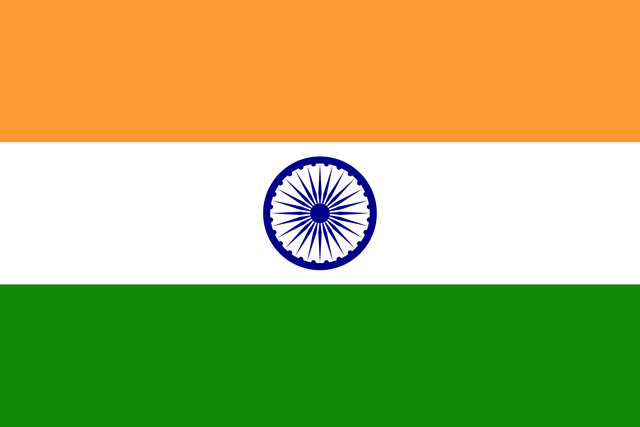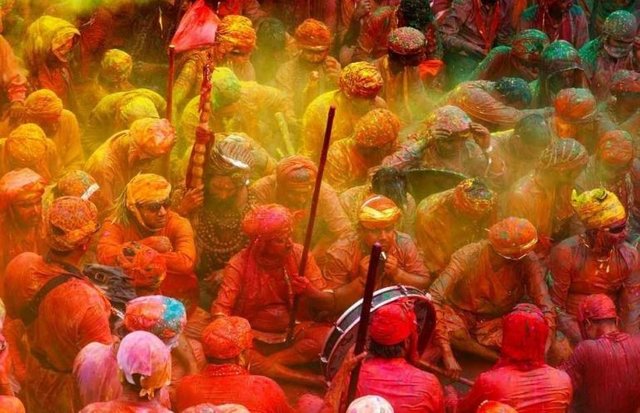Strange customs and traditions in India
India

India is located in southern Asia, bordered to the north by China, Nepal, Bhutan, and Afghanistan, to the south by Sri Lanka, to the west by Pakistan and the Arabian Sea, to the east by the Gulf of Bengal, Bangladesh, and Myanmar. India is divided into 28 states, in addition to seven federal regions, and New Delhi is the official capital of India, and the most famous and largest cities are Mumbai, Delhi, Madrasas, and Hyderabad. With an area of 3,165,596 km2, India is the seventh-largest country in the world, and the second-largest country in terms of population after the People's Republic of China, with a population of 1,263,344,631 people, according to 2014 statistics. Hindi and English are the two official languages. in the country, in addition to 41 other languages. There are also a large number of religions in addition to Hinduism, Islam, Christianity, Buddhism, and Sikhs.
Strange customs and traditions in India

Social habits are defined as a set of acquired methods, actions, or behaviors, which are inherited by generations through time, and these habits are usually linked to a specific place and time. As for traditions, it can be said that they express everything related to the past, and the days pass by it to become old, and it is what was inherited from the ancients and moved from the past to the present and passed on from generation to generation.[3] These customs may be strange and unusual, such as the country of India, which includes a group One of the strange habits recorded by the eyes of the cameras, and written by the pens of astonished journalists in front of them. Here are some of the most unusual customs and traditions in India:
The food

There are strange foods, and different customs used by the Indians in cooking, including that they add chili, pepper, and many spices to most types of food and drink, even to sweets, such as gateau.
Marriage

Each country has its traditions of marriage, and ways to celebrate it. We mention the strange customs of the Indian people in marriage: the expenses of marriage such as the dowry, house preparation, and the wedding ceremony are obligatory for the father of the bride, and the groom does not pay anything from them. The law prohibits the marriage of a young man from the poor classes with a girl from the higher classes, but if the young man is from the upper classes, he is allowed to marry whomever he wants, and it is not permissible to deviate from these customs no matter what happens. The groom comes to the wedding on a horse decorated during the wedding.
Beliefs and rituals

There are many religions and beliefs in which the Indians believe, and therefore it is noted that they possess some customs and rituals that may be strange to the rest of the world, and among these beliefs] the human body is cremated after his death, by placing it among the wood and setting it on fire, as this is a tribute to the dead. The widow is placed alive with her husband's body and cremated together, to prove her loyalty to him. Many Indians sacrifice their hair in temples, and this hair is exported to countries around the world; India is one of the largest exporters of human hair. Entry to some temples may require crawling on the ground in a circular motion instead of walking, as it is believed that crawling in the temple will avoid skin diseases. The cow is considered a symbol of fertility in India, and it is a sacred animal that is not slaughtered, even walking in the streets without being intercepted by anyone
Weird festivals in India

There are many festivals that Indians gather to celebrate an occasion, or an important event every year. Some of these festivals provide entertainment for the attendees, and some may harm them, as strange rituals may be performed in the celebration symbolizing something sacred or a kind of sacrifice and offering to get closer to the gods. Among these strange Indian festivals: The Thokum Festival: It is an annual festival carried out by the people of southern India, who tie their bodies with sharp wires, and they are raised to the top. This type of festival has been banned by the Indian government and human rights organizations, as it causes harm and sometimes death to revelers, but it still has not been able to eradicate it. Raging Bulls Festival: The people of southern India celebrate the harvest season by escaping raging bulls among the crowds, a tradition that causes the death of many participants, and it has been banned legally, but it is still widely spread among the people. Buddhist hymns: a traditional celebration held every day in the monasteries and villages of the Indian city of Ladakh, where priests chant the teachings and philosophy of Buddha in groups. It is worth noting that in 2012 this tradition was added to the UNESCO List of Cultural Heritage. Fire Walk Festival: The Fire Walking Festival is held every year, which extends from October to November, in which males perform rituals that indicate their deep faith, by walking on burning coals while they are placed on their heads. A bowl of milk or water. Snake Worship Festival: Some Indians approach snakes during a festival held every year, offering them milk, sweets, and flowers for security and happiness. These snakes may be made of wood, stone, or silver, and they may be real. Holi Festival: It is one of the festivals held to welcome spring, and one of the most colorful festivals in India. Crowds throw powder-color and splash water, in addition to dancing in the streets. This festival is a Hindu tradition. Kerala Festival: This festival is held every year in the harvest season, during which drums are played and the tiger dance is performed, which is movements performed by men after they paint the face of a tiger on their stomachs, and this dance is said to be a tradition that dates back nearly 200 years.